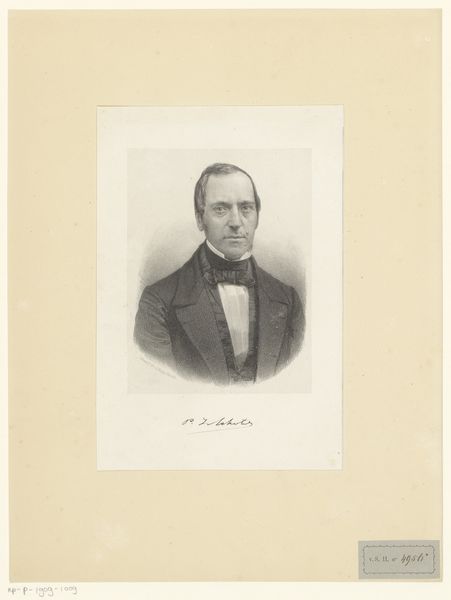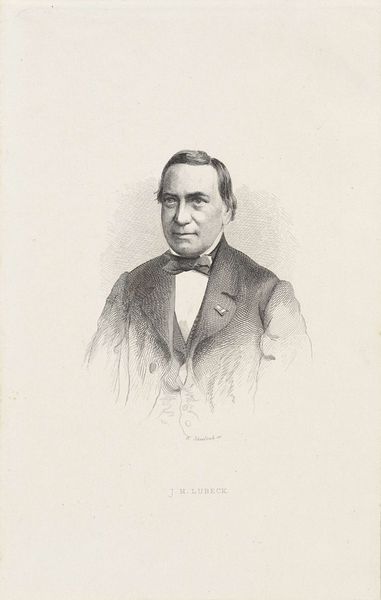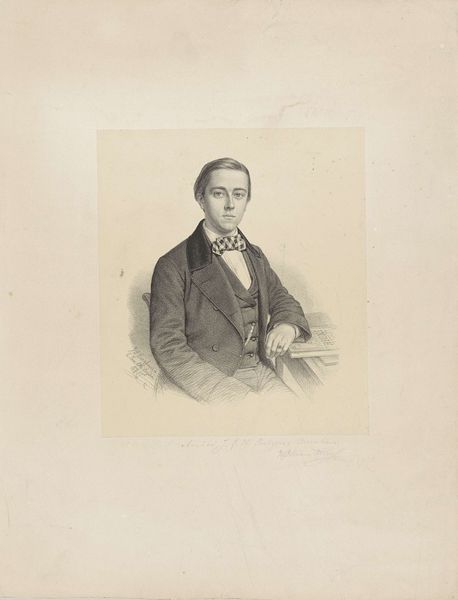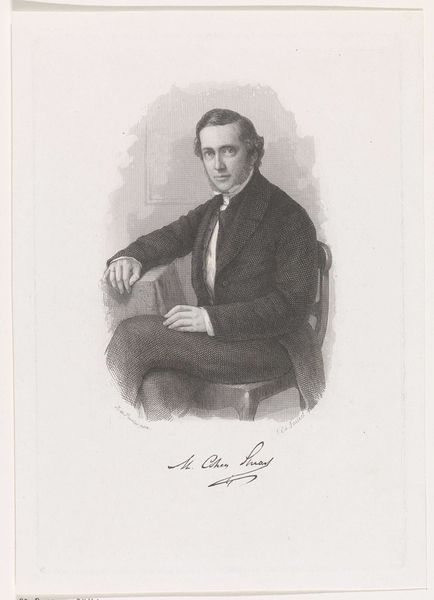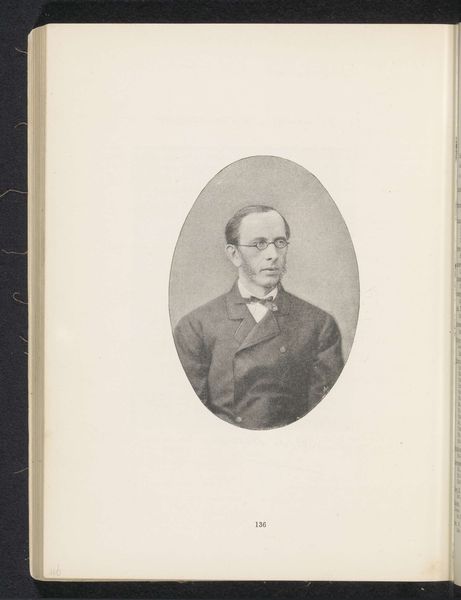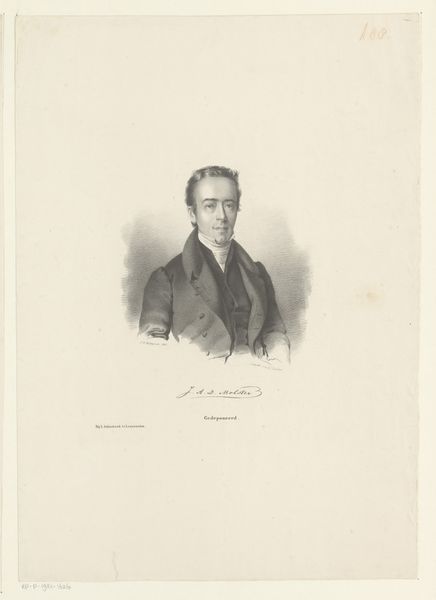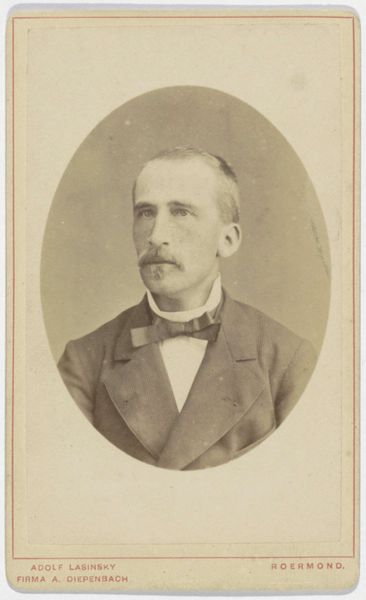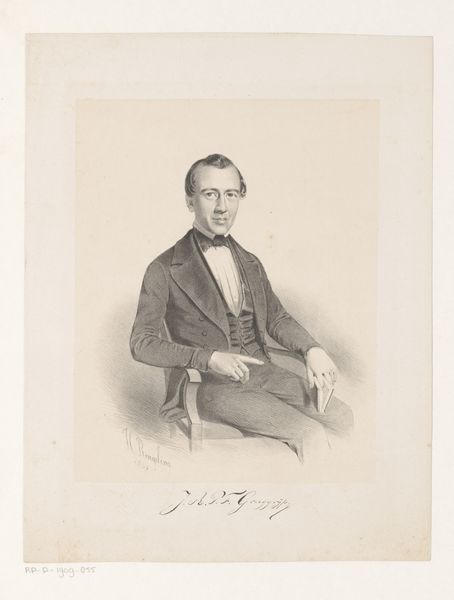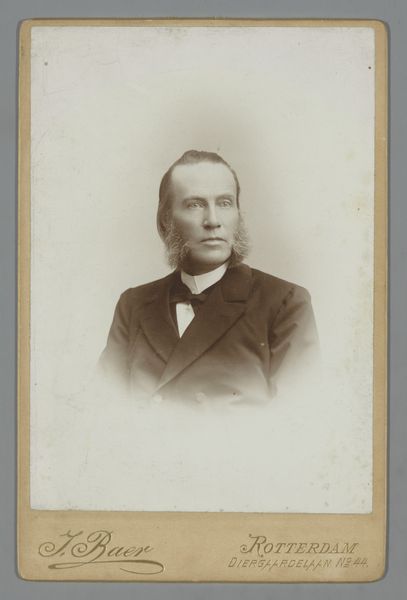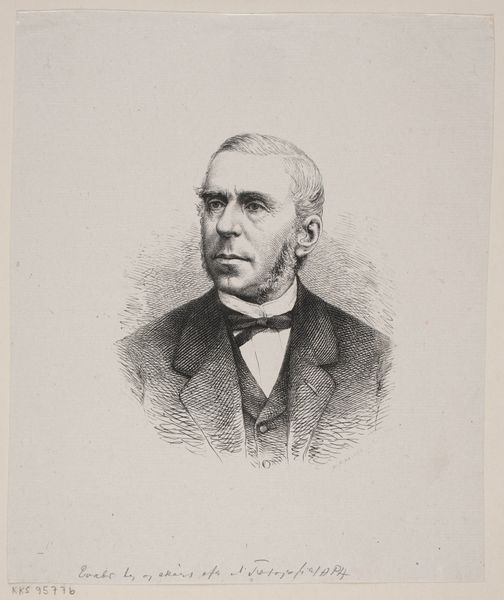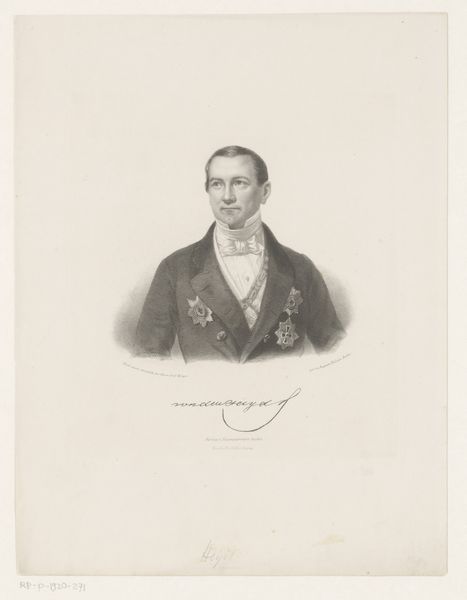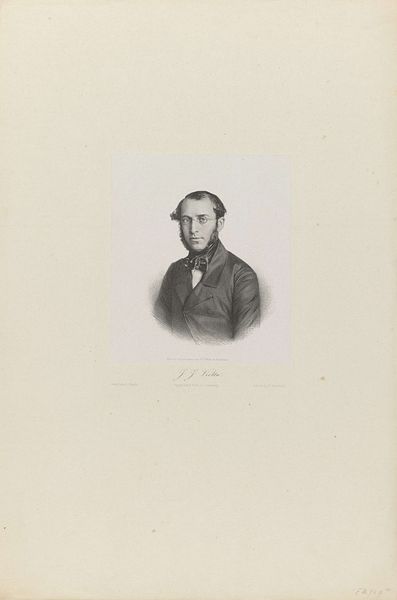
drawing, pencil
#
drawing
#
caricature
#
pencil
#
portrait drawing
#
academic-art
#
realism
Dimensions: height 335 mm, width 255 mm
Copyright: Rijks Museum: Open Domain
Editor: So, here we have Emil Ost's pencil drawing, "Portret van R.J. Faassen," dating from 1856 to 1909. It's a strikingly realistic portrait. What catches your eye about it? Curator: The realism itself is a fascinating starting point. Consider how portraiture at this time was used to convey status, intellect, and virtue. But in this piece, does something subtle seem…almost amplified, brought forward? What do you perceive conveyed through his eyes? Editor: There is a level of scrutiny there, almost…skepticism? Curator: Exactly. We can read it in those finely etched lines around the eyes, the slight downturn of the mouth. How might this portrayal speak to societal expectations or even anxieties around representation, knowledge, or even societal advancement during that period? Does the almost stark simplicity – a pencil drawing amidst perhaps grander oil paintings – further amplify that scrutiny, making it more immediate and perhaps personal? Editor: It makes me think about the shift towards valuing realistic representation. Curator: Yes. The meticulous detail acts as a cultural marker. And that is its power – how Ost uses realism not merely for replication but as a way of digging into Faassen’s character and his potential place within the world’s visual narrative. He may have chosen this style of rendering very deliberately. Do you agree that the simplicity itself becomes part of the story, reflecting the era’s evolving values and a person's psychological narrative? Editor: Absolutely, it feels incredibly intentional, almost…critical. Thanks, that really opened my eyes. Curator: And likewise for me, seeing how you're perceiving the subtle nuances as you bring an inquisitive view toward this piece.
Comments
No comments
Be the first to comment and join the conversation on the ultimate creative platform.
